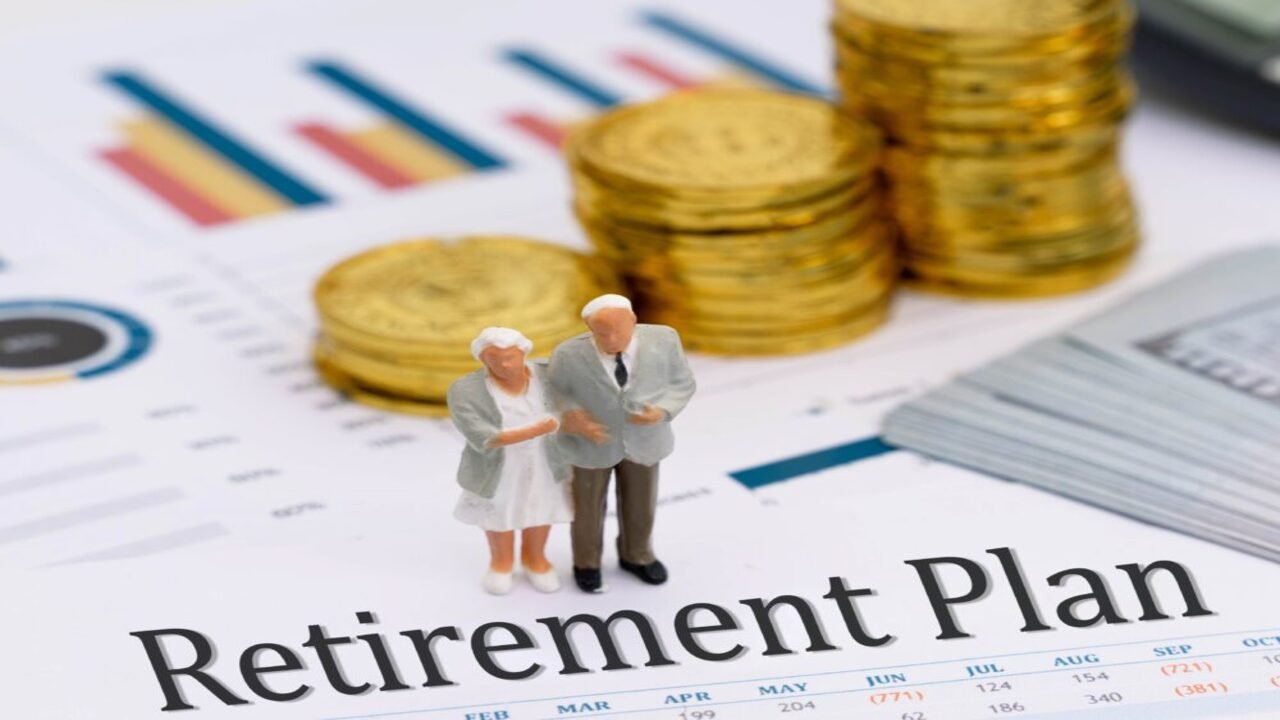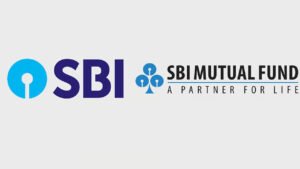Retirement Planning: Essential Steps for a Secure Future.
Thinking about retirement might feel like a distant thing, but honestly, it sneaks up on you faster than you think. It’s not just about having enough money; it’s about making sure you can actually live the way you want when you stop working. We all want a future where we don’t have to worry about bills or rely on others. That’s where good Retirement Planning comes in. It’s like building a roadmap for your future self, making sure you get to where you want to be without too many bumps along the way. Let’s break down how to get there.
Thank you for reading this post, don't forget to subscribe!Key Takeaways
- Figure out what you actually want your retirement to look like – travel, hobbies, or just relaxing at home.
- Take a good, honest look at where your money is right now – savings, debts, and how much you spend each month.
- Estimate how much money you’ll actually need, including things like rising costs and healthcare.
- Plan where your income will come from, like pensions, savings, or investments.
- Start saving consistently and consider different investment options to make your money grow.
Understanding Your Retirement Goals

Retirement Planning Before you can even think about numbers or investment strategies, you really need to get a handle on what you actually want retirement to look like. It’s not just about stopping work; it’s about starting a new phase of life. So, what’s the picture in your head? Do you see yourself traveling the globe, picking up a new hobby, spending more time with grandkids, or maybe just enjoying quiet days at home?
Define Your Ideal Retirement Lifestyle
Think about the day-to-day. What activities will fill your time? Will you be living in the same place, or do you plan to move? Consider your social life, your hobbies, and any travel you hope to do. It’s helpful to jot down a list of things you’d like to accomplish or experience once you’re no longer working.
Determine Your Target Retirement Age
This is a big one. When do you realistically want to stop working? Some people dream of retiring early, maybe in their late 40s or 50s, while others prefer to work longer, perhaps into their 70s. Retirement Planning Your target age directly impacts how much time you have to save and how long your savings will need to last. It’s a personal decision, and there’s no single right answer.
Estimate Required Retirement Savings
Once you have a clearer idea of your desired lifestyle and when you want to retire, you can start to estimate how much money you’ll actually need. This involves looking at your projected expenses, factoring in inflation, and considering potential income sources. It’s a bit like putting together a puzzle, where each piece of information helps you see the bigger picture.
It’s easy to get lost in the details, but remember that your retirement goals are the compass guiding your entire financial plan. Without a clear destination, you can’t plot the best course.
Assessing Your Financial Landscape
Before you can really plan for retirement, you need to know where you stand right now. It’s like trying to map out a road trip without knowing your starting point. Retirement Planning You’ve got to get a handle on your current money situation.
Evaluate Current Savings and Investments
First things first, take a good, hard look at what you’ve already saved. This means checking all your bank accounts, any retirement funds you might have from past jobs, and any investments like stocks or bonds. Don’t forget about things like CDs or even valuable assets you own. It’s about getting a clear picture of your total net worth.
- Savings Accounts: Check balances in checking and savings.
- Investment Accounts: List stocks, bonds, mutual funds, ETFs.
- Retirement Accounts: Include 401(k)s, IRAs, pensions, etc.
- Other Assets: Consider real estate equity, valuable collectibles.
Analyze Debts and Monthly Cash Flow
Now, let’s talk about what you owe and what’s coming in each month. List out all your debts – mortgages, car loans, credit card balances, student loans. Figure out the interest rates on each. Then, track your income after taxes and subtract all your regular monthly expenses. Retirement Planning This will show you how much money you actually have left over, or if you’re spending more than you earn.
| Debt Type | Balance | Interest Rate | Monthly Payment |
|---|---|---|---|
| Mortgage | $200,000 | 4.5% | $1,200 |
| Car Loan | $15,000 | 6.0% | $400 |
| Credit Cards | $5,000 | 18.0% | $200 |
| Student Loans | $30,000 | 5.5% | $350 |
Understanding your monthly cash flow is key to knowing how much you can realistically put towards savings.
Understand Your Current Financial Standing
Putting it all together, what’s your overall financial health? Are you carrying a lot of high-interest debt? Is your income significantly higher than your expenses, leaving room for savings? Or are you living paycheck to paycheck? This assessment isn’t about judgment; it’s about getting honest with yourself so you can make a solid plan.
Knowing your starting point helps you set realistic goals and figure out the best path forward. It’s the foundation upon which your entire retirement plan will be built. Without this clear view, any plan you make is just guesswork.
Think of this stage as taking your financial temperature. You need to know if things are healthy, or if there are underlying issues that need addressing before you can focus on long-term growth.
Estimating Future Financial Needs
Okay, so you’ve thought about what you want retirement to look like. That’s a great start. Now, let’s get real about how much money that actually takes. This isn’t just about guessing; it’s about putting some numbers to your dreams.
Project Future Living Expenses
Think about your day-to-day life when you’re not working. What will you be spending money on? It’s not just the big stuff. You need to consider:
- Housing: Will you own your home outright? Rent? Downsize? What about property taxes or rent increases?
- Food: Eating out more? Cooking at home? Grocery prices can change.
- Utilities: Electricity, water, internet – these costs might not go down.
- Transportation: Gas, car maintenance, public transport, or maybe you won’t need a car at all.
It’s a good idea to list out all the things you spend money on now and then adjust them for retirement. Some costs might go up, and some might go down.
Account for Inflation and Healthcare Costs
Retirement Planning This is where things can get a bit tricky, but it’s super important. Inflation means your money will buy less in the future than it does today. So, if you need $50,000 a year now, you’ll likely need more than that in 20 or 30 years to have the same buying power.
Healthcare is another big one. Medicare covers a lot, but not everything. You’ll probably have out-of-pocket costs for things like:
- Doctor visits and specialist fees
- Prescription drugs
- Dental and vision care
- Potential long-term care needs
It’s wise to research average healthcare costs for retirees and add a buffer for unexpected medical bills. Some people even look into long-term care insurance or health savings accounts (HSAs) to help manage these future expenses.
Factor in Desired Retirement Activities
Remember that ideal retirement lifestyle we talked about? Now’s the time to put a price tag on it. What do you want to do?
- Travel: Are you planning extensive trips, or just occasional weekend getaways?
- Hobbies: Will you take up new hobbies that cost money, like golf or painting?
- Socializing: Dining out with friends, attending events, or joining clubs?
- Giving Back: Supporting family or charitable causes?
Be honest about what will bring you joy and fulfillment. If you plan to travel the world, that’s going to require a much bigger nest egg than if you plan to spend your days gardening and reading at home. Retirement Planning Try to create a realistic budget for these activities. It’s better to overestimate a little than to run short when you’re trying to enjoy your retirement years.
Developing Your Retirement Income Strategy
So, you’ve got a handle on your goals and where you stand financially. Now comes the exciting part: figuring out how you’ll actually get paid in retirement. It’s not just about having a big pile of cash; it’s about making sure that money keeps coming in, month after month, year after year.
Identify Potential Income Sources
Think about all the ways money could flow into your life once you stop working. This isn’t just about your 401(k) or savings accounts. You’ve got to look at everything. This includes:
- Social Security: This is a big one for most people. Make sure you understand your estimated benefits based on your earnings history. You can get a good idea of this by checking your statement from the Social Security Administration. It’s a reliable income stream that forms the foundation for a secure retirement.
- Pensions: If you’re lucky enough to have a pension from a former employer, figure out exactly what it pays and when it starts. These are often quite stable.
- Investment Income: This covers dividends from stocks, interest from bonds, and any rental income if you own property. It’s money your money makes for you.
- Annuities: These are insurance products that can provide a guaranteed income for life, though they can be complex.
- Part-time Work or Business: Some folks plan to keep working a bit or run a small business in retirement. Factor that in if it’s part of your plan.
Evaluate the Reliability of Income Streams
Not all income sources are created equal. Some are pretty much guaranteed, while others can fluctuate. It’s important to know the difference.
- Guaranteed Income: Social Security and pensions typically fall into this category. They’re usually predictable and less affected by market ups and downs.
- Variable Income: This includes income from investments like stocks and mutual funds. The amount you receive can change based on how the market is doing. You need to be comfortable with this variability.
It’s wise to build your retirement income plan around your most reliable sources first. Retirement Planning Think of these as your safety net. Then, you can layer in the more variable income streams to boost your total income and potentially increase your lifestyle flexibility.
Plan for Passive Income Generation
Passive income is money you earn with minimal ongoing effort. In retirement, this can be a game-changer, providing income without you having to actively work for it. This could involve:
- Dividend-Paying Stocks: Companies that regularly pay out a portion of their profits to shareholders.
- Bonds: These can provide regular interest payments.
- Rental Properties: Owning real estate that you rent out can generate consistent monthly income.
- Royalties: From books, music, or patents you might have created.
Building up these passive income streams before you retire can significantly smooth your transition and provide a more comfortable financial cushion. It’s about making your money work for you, even when you’re not working yourself. For more on how to get your investments working harder, consider looking into investment strategies.
Implementing a Robust Savings Plan

So, you’ve figured out what you want your retirement to look like and how much cash you’ll likely need. That’s a huge step! Now comes the part where we actually build the nest egg. It’s not always the most exciting part, but it’s definitely the most important. Think of it like building a house – you need a solid foundation, and that foundation is your savings plan.
Establish Consistent Savings Habits
This is where the rubber meets the road. Saving for retirement isn’t a one-time thing; it’s a marathon, not a sprint. You need to make saving a regular part of your life, almost like paying any other bill. Even if you can only set aside a small amount each month, the key is consistency. Over time, those small amounts add up, especially with the magic of compound growth. Retirement Planning It’s about making saving automatic, so you don’t even have to think about it.
- Automate your savings: Set up automatic transfers from your checking account to your retirement savings account right after you get paid.
- Increase contributions gradually: Aim to increase your savings rate by 1-2% each year, or whenever you get a raise.
- Treat savings like a non-negotiable expense: Prioritize it alongside rent or mortgage payments.
The earlier you start, the more time your money has to grow. Even small, consistent contributions can make a significant difference down the line.
Utilize Retirement Savings Accounts
There are some really great accounts out there designed specifically to help you save for retirement, often with tax advantages. Your employer might offer a 401(k) or a similar plan, and it’s usually a no-brainer to contribute at least enough to get any matching funds they offer. That’s basically free money! Beyond employer plans, you might consider IRAs (Individual Retirement Arrangements), like a Traditional IRA or a Roth IRA, depending on your situation. Each has its own rules and benefits, so it’s worth looking into which ones fit you best. You can find more information on planning your future with a smart retirement planning guide.
Leverage Online Retirement Calculators
Don’t feel like you have to do all the math yourself. There are tons of free online retirement calculators available. These tools can help you estimate how much you need to save based on your current age, income, desired retirement age, and lifestyle. Retirement Planning They can also show you projections of how your savings might grow over time. Using these calculators can give you a clearer picture and help you stay motivated by seeing your progress. They’re a great way to get a ballpark figure and adjust your savings strategy accordingly.
Navigating Investment Strategies for Retirement
When it comes to retirement, just saving money isn’t enough. You need to make that money work for you. This is where investment strategies come into play. It’s about picking the right mix of investments to help your savings grow over time.
Balancing Risk and Reward
Think of investing like a seesaw. On one side, you have potential for higher returns, but that often comes with more risk. On the other side, you have safer investments that might not grow as quickly. As you get closer to retirement, you’ll likely want to shift the balance towards less risk. It’s a constant adjustment based on how old you are and how comfortable you are with the possibility of losing money.
Here’s a simple way to look at it:
- Stocks: Generally offer higher growth potential but come with higher risk.
- Bonds: Typically offer lower returns but are considered less risky than stocks.
- Cash/Money Market: Very low risk, but also very low growth potential.
The Necessity of a Diversified Portfolio
Putting all your retirement savings into one type of investment is like putting all your eggs in one basket. If that basket drops, you lose everything. Diversification means spreading your money across different types of investments. This way, if one investment performs poorly, others might do well, helping to smooth out the ride. It doesn’t stop losses entirely, but it’s a smart way to manage risk while aiming for your long-term goals. Retirement Planning A good starting point for understanding different investment options is to explore various retirement income strategies.
Utilizing Dollar-Cost Averaging
Dollar-cost averaging is a straightforward method that can help take some of the guesswork out of investing. Instead of trying to time the market (which is incredibly difficult), you invest a fixed amount of money at regular intervals, say, every month. This means you automatically buy more shares when prices are low and fewer shares when prices are high. It’s a disciplined approach that can help reduce the impact of market ups and downs on your overall investment.
This consistent investment approach helps build your portfolio steadily over time, regardless of market noise. It’s a practical way to stay invested without getting caught up in daily price swings.
Remember, your investment strategy should align with your personal financial situation and retirement timeline. Regularly checking in on your investments and making adjustments as needed is key to staying on track for a secure retirement.
Regularly Reviewing Your Retirement Plan
So, you’ve put together a retirement plan. That’s a big step! But here’s the thing: it’s not a ‘set it and forget it’ kind of deal. Life happens, right? Your goals might shift, or maybe the market does something unexpected. That’s why checking in on your plan regularly is super important. Think of it like tending to a garden; you can’t just plant the seeds and walk away. You need to water it, pull weeds, and make sure it’s getting enough sun.
Monitoring Progress Towards Goals
This is where you see how you’re actually doing compared to what you set out to achieve. Are you saving enough each month? Are your investments growing as you expected? It’s good to have a clear picture of where you stand. You could even make a simple chart to track your savings growth over time.
- Track your savings rate: Are you consistently putting aside the amount you planned?
- Review investment performance: How are your stocks, bonds, or other investments doing?
- Compare actual spending to projected expenses: Are you on track with your budget?
It’s easy to get caught up in the day-to-day, but taking a moment to look at the bigger financial picture can really help you stay motivated and on course.
Adjusting for Life Changes
Life throws curveballs, and your retirement plan needs to be flexible enough to handle them. Did you get a promotion? Have a child? Or maybe you decided you want to retire a little earlier (or later)? These big life events mean you probably need to tweak your plan. For instance, a new job might offer a better retirement plan, or a new family member might mean you need to save more.
Adapting to Market Fluctuations
The stock market can be a bit of a rollercoaster. Sometimes it goes up, sometimes it goes down. When the market shifts, your investment strategy might need a little adjustment. This doesn’t mean panicking and selling everything if the market dips, but it does mean reassessing if your current investment mix still makes sense for your goals and your comfort level with risk. It’s about making sure your money is still working for you, even when things get a bit bumpy.
Wrapping It Up: Your Retirement Journey
So, we’ve gone over a bunch of stuff about getting ready for retirement. It might seem like a lot, but really, it’s about taking things one step at a time. Figuring out what you want your retirement to look like, looking at your money now, and then making a plan to get there. Remember, things change, so it’s good to check in on your plan now and then and make tweaks if you need to. It’s not about being perfect, it’s about making progress. You’ve got this.
Frequently Asked Questions
Why is it important to plan for retirement?
Planning for retirement is super important because it helps make sure you have enough money to live comfortably after you stop working. Without a plan, you might run out of money or have to cut back a lot on what you enjoy doing.
When should I start saving for retirement?
The sooner you start saving, the better! Even putting away a little bit of money when you’re young can grow a lot over time thanks to something called compound growth. Think of it like a snowball rolling down a hill – it gets bigger and bigger.
How much money do I actually need to retire?
That’s a big question! It really depends on the lifestyle you want. You need to think about how much you’ll spend on things like housing, food, healthcare, and fun activities. Using online calculators can help you get a rough idea.
What are the main ways I can save for retirement?
You can save by putting money into special retirement accounts, like a 401(k) or an IRA. These often have tax advantages. You can also invest your savings in things like stocks and bonds, but it’s smart to spread your money around to lower risk.
Should I worry about inflation when planning for retirement?
Yes, definitely! Inflation means that prices for things go up over time. So, the money you save today might not buy as much in the future. You need to plan for your money to grow faster than inflation.
How often should I check on my retirement plan?
It’s a good idea to look at your retirement plan at least once a year, or whenever something big happens in your life, like a job change or a new family member. This way, you can make sure you’re still on track and make any needed changes.













